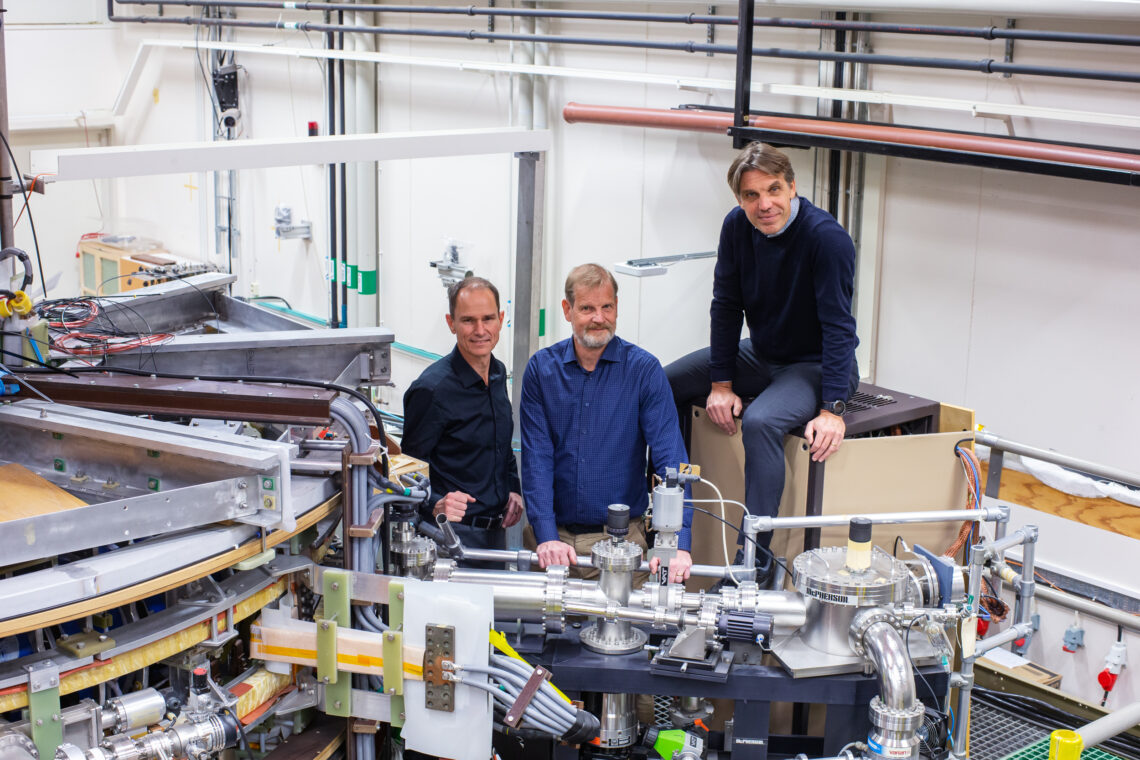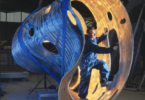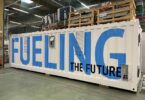Developing fusion – a technology that promises to be a large-scale and carbon-free source of energy based on the same principle that powers the Sun and stars– is challenging. The science is complex; nuclear engineers and physicists have been working on it for decades. The capital needs are huge – in the realm of billons of euros- but the upside is so large that there is a global race to see which country or region can get there first.
European fusion startups are at a disadvantage because their U.S. competitors are raising anywhere from 10x to 20x the amount of funding and are benefiting from government incentives. But money is not the only criteria. It will take a whole ecosystem – including resources and expertise from many different disciplines and industries – to get over the finish line.
That is where KTH Innovation comes in. It’s the innovation arm of Sweden’s Royal Institute of Technology, a public research university in Stockholm established in 1827 which conducts research and education in engineering and technology.
Like many universities KTH regularly spins-out startups but it recently made an exception and decided to spin-in a private Swedish fusion company called Novatron Fusion Group. The collaboration has helped the company achieve scientific validation and raise money from both KTH Holding, the investment arm of KTH and EIT InnoEnergy, an entity supported by the European Institute of Innovation and Technology (EIT) that aims to support the energy transition by accelerating the Green Deal and Europe’s decarbonization goals. The collaboration’s aim is to enable fusion on a large commercial scale so that it can be developed into a sustainable energy solution for the future.
The payoff could be huge: If validated Novatron’s invention promises to simplify fusion power engineering and reduce the capital cost of fusion reactors to half of that of current solutions in experimental development such as the Tokamak and ITER technology that scientists from 35 nations have been working on since the 1990s. Thanks to the collaboration Novatron is now building a new test facility at KTH (pictured here) that aims – within a year – to validate its approach to plasma confinement and conduct further fusion research. The vision is to have a commercial fusion design in the final stage that enables net-power to the energy grid before 2040, says Lisa Ericsson who is both head of KTH Innovation, a centrally located innovation support unit at KTH and CEO of KTH Holding, the university’s investment arm.
The decision to spin-in Novatron reflects Ericsson’s conviction that Europe’s universities can and should play a bigger role in boosting Europe’s deep tech sector and is an example of how important it is not just to innovate technologies but also the models used to support them.
Fusion requires skills, resources and expertise that can only be achieved by bringing different partners together, says Ericsson. “This collaboration strengthens KTH’s role both in fusion research and innovation development,” she says. “If this works, it will lead to the emergence of a completely new global industry starting at KTH.”
The Missing Piece
There is an enormous demand for reliable, affordable and non-fossile energy to power the global electric transformation. Fusion power has the capacity to provide a limitless supply of clean, reliable and affordable energy. At the same time fusion power is safe and does not produce any long-lived radioactive waste or greenhouse gas emissions.
To build a fusion power plant you need a reactor, turbines converting heat to electricity, control systems, a fuel logistics center, several buildings to house it all, and infrastructure to supply the plant with the power to ignite the plasma and distribute the electricity to the grid.
The Novatron concept originates from Swedish inventor and entrepreneur Jan Jäderberg who invented a proprietary and unique solution for how to contain the plasma that reaches more than 100 million degrees Celsius. In fusion mirror machines the plasma oscillates between two magnetic mirrors. This approach had a big problem with plasma confinement, which Novatron seems to have solved. The solution could be the missing piece needed to complete decades of research and experiments on fusion power. The company approached KTH because it needed scientific validation, says CEO Peter Roos. Novatron’s approach is unique and because it was developed independently was not biased by other approaches. But without the backing of a university “we didn’t have credibility,” he says.
“What KTH has given us is credibility – we have validation from professors who have determined that this is an exciting ground-breaking development—as well as access to a great big lab to run fusion experiments, state-of-the-art technology, leading research in plasma physics and computer simulations capabilities, he says. KTH Professor Emeritus Jan Scheffel has joined the Novatron team to help construct good computational models for the Novatron reactor design. “These models can then be used to improve our plasma simulations and will be of great assistance when compared to actual physical experiments taking place in the Novatron reactor,” says Roos.
If the approach to plasma confinement is validated it could be the key for completing decades of research and experiments on fusion power, he says.
Novatron says its solution has a lower complexity, making it less expensive to build a fusion power plant and maintain it. It also says it has a higher efficiency as the open magnetic field-line concept makes it possible to implement so-called ‘direct conversion’ of charged particles, which have a 70% degree of efficiency compared to the traditional 35% when converting transforming heat to current. The company says the result will be a competitive cost of energy produced, comparable with wind- and solar power.
Roos, a speaker on a panel at the Sweden.eu Deep Tech Entrepreneurship conference moderated by The Innovator’s Editor-in-Chief, noted that Europe is pouring billions of euros into the ITER project in the south of France, which is a collaborative scientific project with no clear commercialization path. He urged policy makers to adapt their policies and not place all bets on a single technological approach,
Jumping Through Hoops
Creating the collaboration required the university to change its thinking and its processes, says Ericsson, who has spent 20 years building up the innovation arm. Since 1949 all intellectual property developed at the university is owned by the researchers and it is easy for both students and professors to get a leave of absence to start their own companies.
While Roos and Jäderberg both graduated from KTH, Novatron was created in 2019 outside of the university ecosystem. After top professors at the university confirmed that the approach “was a simple yet brilliant solution to a very valid problem, that scientists have spent years and years trying to solve” Ericsson said she knew she had to find a way to make a collaboration work.
“We could have said ‘this is not for us’ we are a university, and we innovate ourselves, but we realized that it made a lot of sense to build this together,” she says.
Sweden has had a lot of success in producing digital startups like Spotify and Klarna, notes Ericsson, but “Sweden also has a tradition of scaling deep tech companies. What we see now is more complex innovation on deep tech with the possibility of creating impact that is much wider,” she says. Building connections with the scientific community in universities is key to building trust and validating the technologies, she says.
Ericsson was also a speaker on a panel at the Sweden.eu Deep Tech Entrepreneurship conference. A key takeaway from the conference is that deep tech companies need access to the type of expensive lab equipment housed in universities.
Ericsson said she had to jump through hoops to make the collaboration with Novatron work, not just because it meant reinterpreting some of the rules but also because the university is publicly funded supporting a private entity can be considered state aid.
“Rules, guidelines and regulations, like state aid, can be restrictive, but it is possible to find a way forward within the existing framework,” says Ericsson. When KTH started its collaboration with Novatron it realized that it would need a new interpretation of what can be done, and that it would need to continue re-examining in parallel with the development of the project, she says. “As a Swedish university, our role is also to create impact, and if we had waited until all our questions were answered before starting, Sweden, and possibly Europe would have lost this opportunity of being at the forefront of energy technology,” says Ericsson. “Frameworks can be changed and to level the playing field and bring Europe to the top, we hope that European decision makers will work with us to facilitate these kinds of collaborations in the future.”
KTH is one of 20 ecosystem builders from leading universities and start-up hubs that recently formed RISE Europe, an initiative of UnternehmerTUM – the center for innovation and business creation at Technical University of Munich – that seeks to reinforce “made in Europe” innovations.
“I believe universities need to lean in more, be more active and take part in solving the big challenges,” says Ericsson. “Both students and faculty would like us to be more involved and that means we need to challenge ourselves a bit and adapt and innovate, otherwise we will be left behind.”
This article is content that would normally only be available to subscribers. Sign up for a four-week free trial to see what you have been missing.







